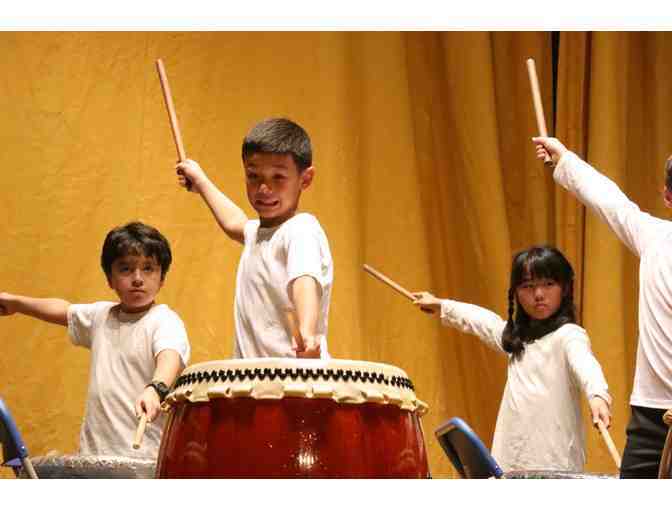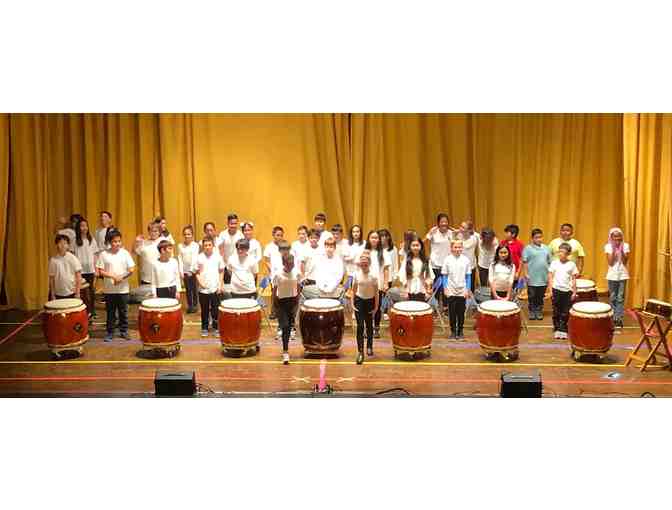Fund a Need #1: Taiko Classes for all JBBP grades K-5 is $24,000 for one year

Item Number: 418
Time Left: CLOSED

Description
Help give our Kids Taiko Classes
The taiko classes you may have seen performed in the 2019 Gakugeikai Performance are an amazing way to introduce japanese culture, music, art and excersice for all JBBP grades K-5. These classes cost 24,000 for one year and give our children exposure to a rare and beautiful artform.
Please consider a donation of:
$50 (Enter Quanitity=1)
$100 (Enter Quanitity=2)
$500 (Enter Quanitity=10)
$1,000 (Enter Quanitity=20)
In Japanese, taiko literally means "drum," though the term has also come to refer to the art of Japanese drumming, also known as kumi-daiko. Taiko has been a part of the Japanese culture for centuries. Centuries ago, taiko was used predominantly in the military arena. As it evolved, Japanese Buddhist and Shinto religions gradually began to take it on as a sacred instrument. Historically, it has existed in a multitude of other environments, including agrarian, theater, and the imperial court. The art of kumi-daiko, performance as an ensemble, originated post-war in Showa 26 (1951). It was created by Daihachi Oguchi, a jazz drummer who serendipitously stumbled across an old piece of taiko music. Wondering why taiko were never played together, he broke with tradition by forming a taiko drum ensemble. More recently, taiko has enjoyed not only a resurgence of interest in Japan, where there are over 4,000 taiko ensembles, but also transplantation and evolution in North America.
NORTH AMERICAN TAIKO
In this country, taiko has become a rich and varied form of drumming, as idiomatically North American as jazz or American Indian drumming. The first North American Taiko group, the San Francisco Taiko dojo, was created in 1968 by Grandmaster Seiichi Tanaka. San Francisco Taiko Dojo's style was a fusion of Oedo Sukeroku, Osuwa Daiko and Gojinjyo-daiko styles. One year later, Kinnara Taiko of the Senshin Buddhist temple in Los Angeles was founded based on Japanese American Buddhist taiko. San Jose Taiko followed in 1973, with a focus on making taiko a Japanese American art form.